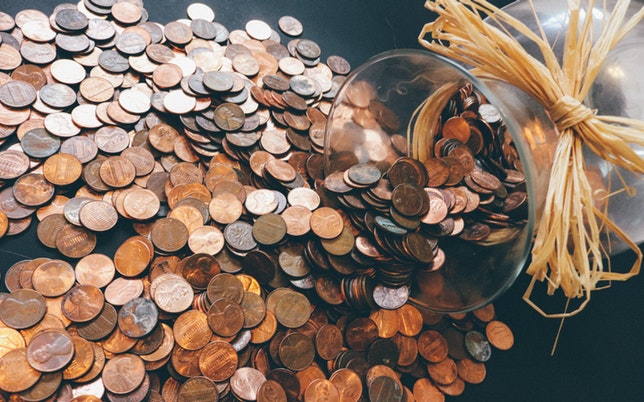The fiscal policy of the Muslim Rulers differed from monarch to monarch. Some of them levied only Ushr (A tenth of agricultural produce given by the Muslim cultivators to the State as land tax) and Khiraj (The land tax or tribute generally realised from the non-Muslim citizens of the Muslim State) in accordance with the Islamic Shariah while others imposed different tithes and imposts. Some charged poll-tax or Jizya from the non-Muslims but others overlooked it.
This naturally meant a wide difference in the total revenues of their kingdoms for some ruled from Kashmir to Bengal while the realm of others was too small as a popular adage said: The kingdom of Shah Alam, from Delhi to Palam.
Contents
Tax System of Muslim Rulers of India
The tax structure of different Muslim kings are briefly mentioned here.
Tax System of Muslim Ruler Alauddin Khilji
Alauddin Khilji fixed the land tax at fifty per cent of the produce from all holders of the land whether they were village headmen, landlords or cultivators. In addition there were a number of other taxes like those on houses, grazing grounds, trades and callings. In all, there were 33 taxes levied by Alauddin Khilji.1
Tax System of Muslim Ruler Firoz Shah
Firoz Shah abolished all tithes and taxes disallowed by the Shariah.2 He realised only Ushr from the cultivators, Zakat from the Muslims, Jizya from the non-Muslims and Khums or one-fifth share of the state out of the spoils of war and income from the mines.
Tax System of Muslim Ruler Sher Shah Suri
Sher Shah Suri introduced a schedule of rates for land-tax and other taxes and also ordered to undertake an accurate yearly survey of cultivated lands. He fixed the share of the Government at one third of the agricultural produce. Tax was realised from the traders twice; one was the custom duty when they entered a city and the other sales-tax when they had sold their goods.
Tax System of Akbar
Akbar promulgated a number of fiscal regulations and re-introduced the system of land survey. He divided the cultivated lands into two categories:
- The lands irrigated by rains and
- Those irrigated by canals and wells.
The land-tax fixed for the former category of land was one-half of the produce and one-third of the produce for the lands of latter category.
In the case of sugar-cane and other crops which require more labour, the land-tax fixed by Akbar ranged from one-fourth to one-seventh of the produce depending on the nature of crop and source of irrigation. The revenue system introduced by Akbar comprised 36 types of taxes.
Tax System of Muslim Ruler Aurangzeb
Aurangzeb Alamgir abolished eighty taxes in 1659. He laid stress, in 1668, in compliance with the principles and traditions of Islamic law which resulted in levy of Zakat on Muslims instead of different commercial levies to which they had been subjected till now.
Accordingly the Muslims were made to pay two per cent and a half of their savings: three per cent was paid by the Christians and five per cent by the Hindus. In 1669, Jizya was imposed on all Zimmi non-Muslims.
What is Jizya?
Zimmi is a non-Muslim subject of the Islamic State, who for the payment of a poll or capitation tax, enjoys security of his person, property and religious beliefs. The persons thus afforded protection are exempted from military service. They are exempted from the payment of Jizya if they volunteer for the defence of the state.
State Revenues Under Muslim Rulers
It is difficult to make any precise assessment of the total Income of the State under different monarchs on account of the different fiscal policies pursued by them, the economic conditions prevailing under different regimes and the difference in the coinage under different rulers. It can only be said that:
The tax structure consisted of the following:
(a) Ushr and Khiraj
(b) Other taxes
(c) Jizya
(d) Presents made by the grandees to the sovereign.
These presents consisted of precious stones, horses and elephants, costly clothes, arms and vases of gold and silver, and were made over to the king when the grandees returned from their assignments or the provinces governed by them and on the occasion of Eid or similar other festivals.
(e) The state claimed all property left by its officers. This system was introduced by the Moghul rulers of India.
The rates of taxes were different during different periods. Some of the monarchs demanded one-half of the produce of land as land revenue while others took only one- third or even much less, that is, one-tenth of it. Still others levied only Ushr, Zakat and Jizya or added a few more taxes to augment the state income.
The contemporary historians of the time more than often wound up their narratives by giving a detailed account of the battles fought by the then monarchs rather than throwing light on the system of taxation followed by different kings.
Some of the European travellers such as William Hawkins, Manucci, Catrou, Gemelli Careri and Francis Bernier have no doubt tried to assess the total revenues of the different regimes but their estimates given in terms of the currency of their own countries, are not reliable because some of them have based their estimates on the demands of land revenue alone while others have included some other taxes too.
On the other hand the estimated income given here has been obtained from the writings of historians, such as Saraj Afif, Nizamuddin, Abdul Hamid, Bakhtawar Khan and others, who had been on intimate terms with the ruling circles of their time.
State Revenue under Firuz Shah Tughluq
During the reign of Firuz Shah Tughluq annual receipts of the State exchequer amounted to 6,85,00,000 tankas.3 In addition to it the revenues from the lands lying between Yamuna and Sutlej, reserved for meeting the expenditure on royal household was 80,00,000 tankas. Tankas were coins of silver and gold both. The estimates given here relate to silver tankas weighing one tola (approx 11 grams).
State Revenue under Akbar
The demands from the land-tax, in the time of Akbar, added up to 640,00,00,000 dams, as mentioned by Nizamuddin in Tabqat-i-Akbari.4 The total revenues during the reign of Akbar were equivalent of Rs. 16,00,00,000 of the early British period.
State Revenue under Jahangir
During the later period of Jahangir’s reign the income from land-tax amounted to 7,00,00,00,000 dams which would be roughly equal to Rs. 17,50,00,000. This estimate of state revenues has been taken from the Badshah Namah.
State Revenue under Shahjahan
The state revenues showed an upward trend during the reign of Shahjahan when the rates of certain taxes were revised. Shahjahan imposed certain new taxes but reduced the rates of others in certain provinces like Ahmadabad and Deccan. The total income of the State showed a rise of one hundred crore dams as a result of these re-adjustments.
After the conquest of Daulatabad and Tilangana, the State revenues rose further by eight crore dams. Thus the total revenues of the realm under Shahjahan amounted to 8,80,00,00,000 dams which can be considered to have a par value of rupees 22,00,00,000. These estimates too, have been taken from the Badshah Namah.
State Revenue under Aurangzeb Alamgir
The annual receipts of the State coffers, as given by Bakhtawar Khan in Mirat-i-Alam, during the reign of Aurangzeb Alamgir, was 924,17,16,082 dams.
Currencies under Muslim Rulers of India
During the different Muslim dynasties different coins were introduced by the rulers. Here we shall be giving the coins of different periods and their weights.
Currency during Sultanate Period
During the slave dynasty and subsequent sultanate period, the currency in common use was as follows:
- Gold coin-It was called tanka and weighed one tola (or 11.6638 grams).
- There was a tanka of silver also which had the same weight as that of the gold tanka.
- There were two copper coins, both of which were called jital. One of these weighed one tola and the other exceeded the first in weight by three fourth of a tola (or 20.4215 grams). Fifty copper jitals made up a silver tanka.
- The most important of the monetary units current in the south India was hun, a gold coin weighing about 3 grams.
Currency during Moghul Period
- During the Moghul period asharfi was the gold coin which was struck in different weights. The heaviest asharfi weighed one hundred tolas (or 1.166 kilograms). Normally, the emperors used to award these asharfis to their nobles but gradually its weight was reduced.
The asharfi in common use however, weighed one tola only. Another asharfi weighing one masha less than a tola (or roughly 10 grams) was also in use during the reign of Akbar.
- Rupiah was the silver coin during the Moghul period. It was too struck in different weights. The silver rupee in common use weighed a little less than a tola (11 masha and 4 rattis) and was equivalent to 16 annas.
- Paisa was a copper coin weighing 1 tola, 8 mashas and 7 rattis. Its par value was equivalent to a dam.
- Dam was also a copper coin having the same weight as a paisa. Five dams were equivalent to 2 annas of the later period, i. e. 10 dams were equal to 4 annas and 40 dams equal to one rupee of the British period; 400 dams made up 10 rupees, 4000 dams made up 100 rupees 40,000 dams made up 1,000 rupees.
References:
- Barni, pp.287-288
- Afif Shams Siraj, p.254-257
- Tarikh Firoz Shahi (Calcutta, 1891), p. 296.
- Tabaqat-i-Akbari, p. 652 (Nadwatul Ulama MSS No. 66).

